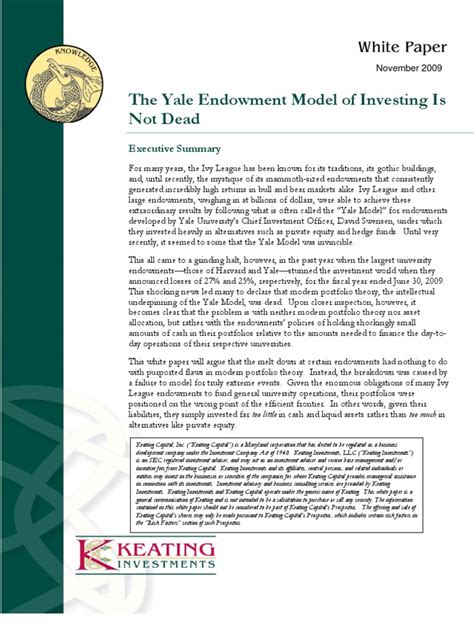As the sun sets on another day, casting long shadows across the serene campus of Yale University, whispers of change are rustling through the hallowed halls of academia. For decades, the revered Yale Model has stood as a beacon of investment strategy, guiding portfolios and shaping endowment funds with its distinctive approach. But now, as winds of uncertainty swirl in the world of finance, some experts are beginning to question if this once unassailable model is facing its twilight.
“The Yale Model has been a touchstone for many institutions seeking to diversify their investments.”
To understand the significance of this potential shift, we must first delve into the origins and principles that have underpinned the Yale Model’s success. Conceived in the 1980s by David Swensen, then Chief Investment Officer at Yale University, this innovative strategy emphasized alternative investments such as private equity, hedge funds, and real assets. By reducing reliance on traditional stocks and bonds while actively seeking out higher returns in less conventional markets, Swensen revolutionized how institutional investors approached portfolio management.
“David Swensen’s groundbreaking approach reshaped how institutions viewed investment strategies.”
Over time, the Yale Model garnered widespread acclaim for its ability to deliver consistent growth and resilience amid market fluctuations. Its core tenets of diversification and long-term focus became gospel for many endowments and pension funds looking to secure financial sustainability beyond fleeting market trends. However, as we navigate an ever-evolving economic landscape marked by volatility and uncertainty – exacerbated by global events like pandemics and geopolitical tensions – even stalwart strategies face challenges.
In recent years, critics have raised concerns about the Yale Model’s sustainability in today’s complex financial environment. With low interest rates squeezing returns on traditional fixed-income assets and heightened competition in alternative investment spaces driving up valuations, some argue that the once-revolutionary model may be reaching its limits. Additionally, questions around liquidity risk in illiquid asset classes and potential concentration dangers loom large over an era where adaptability is key to survival.
“In a changing world fraught with challenges like low interest rates and increased competition.”
So where does this leave institutional investors who have long relied on the tried-and-tested principles of the Yale Model? As they stand at a crossroads between tradition and innovation, one thing is clear – adaptation will be critical. Experts suggest that while elements of Swensen’s pioneering framework remain relevant today, there is a growing need to evolve strategies in response to shifting market dynamics.
As conversations intensify around recalibrating investment approaches to navigate turbulent waters ahead, one thing remains certain: legacy models will continue to be tested against an ever-changing backdrop. The story of the Yale Model serves not just as a historical marker but also as a reminder that evolution is inevitable in an unpredictable world.
Through each chapter written in numbers on balance sheets and echoed in boardroom discussions filled with deliberation – one truth emerges unscathed: adapt or be left behind. The legacy of David Swensen’s brainchild stands at a precipice; whether it adapts to thrive amidst modern challenges or fades into memory remains a narrative yet unwritten.




Leave feedback about this